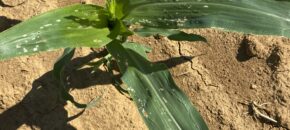This is the chance for eligible fresh fruit and vegetable growers to recover some of their expenses for implementing food safety practices on the farm. For 2024: Applications are due between July 1, 2024 and January 31, 2025 Eligible expenses must be between June 26, 2024 and December 31, 2024 For 2025: Application is due […]
Continue reading...Beat the Heat: Heat Stress Management and OSHA Awareness

A Certified Safety and Health Official (CSHO) from OSHA inspected a farm during the third week of June in Southern NJ for heat related items. With this recent inspection activity and the current legislative landscape pertaining to heat stress, the Rutgers Farm Health and Safety Working Group has increased outreach and education on this topic. […]
Continue reading...Tree Fruit IPM Report June 27, 2024
Peach: Oriental Fruit Moth: A biofix point for OFM was set on 4/10 in both northern and southern counties. All Treatments for the second generation have past. Tarnished Plant Bugs; and Other Catfacing Insects: Catfacing remain very active. Very little recent fruit feeding has been observed. Thrips: Flower Thrips have been observed feeding in highly […]
Continue reading...Vegetable IPM Update 6/26/24

Sweet Corn European corn borer (ECB) moths have declined in blacklight traps in the northern and central counties, and feeding is also declining as previously infested plantings enter the silk stage and are treated. Plantings now in whorl stage are showing little feeding. The highest nightly trap catches of ECB for the week ending 6/26/24 […]
Continue reading...IMPORTANT: EPA Issues Final Cancellation Order and Updates to Existing Stocks Provisions for Several Chlorpyrifos Products
[Tuesday June 25, 2024]. The U.S. Environmental Protection Agency (EPA) is issuing a final cancellation order for Corteva’s chlorpyrifos product “Dursban 50W in Water Soluble Packets” and three Gharda chlorpyrifos products, and an amendment to the exis… Read More »
Continue reading...EPA Releases Updates on Organophosphate Pesticides Dicrotophos, Dimethoate, and Tetrachlorvinphos
[Thursday 6/20/2024]. The U.S. Environmental Protection Agency (EPA) has released the Proposed Registration Review Interim Decisions (PIDs) for dicrotophos and dimethoate, as well as an Interim Registration Review Decision (ID) for tetrachlorvinphos (T… Read More »
Continue reading...